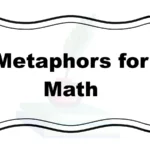Life often presents us with obstacles that test our patience, strength, and determination. Finding the right words to describe these moments can bring comfort, encouragement, and even a sense of clarity. Using metaphors for challenges allows us to express difficult experiences in a way that feels more personal and relatable. Instead of seeing challenges as heavy burdens, we can reshape them as paths, storms, puzzles, or journeys that we’re capable of navigating.
Metaphors not only help us talk about struggles but also remind us that every challenge is an opportunity for growth. The right metaphor can uplift someone, inspire them, or simply help them feel understood. Below, you’ll discover 30 meaningful metaphors for challenges, explained with examples, along with other alternative ways to express them.
1. Challenges Are Storms
Meaning: Difficulties arrive suddenly, disrupting peace, but eventually pass.
Explanation: Like storms, challenges feel overwhelming at first, yet they never last forever.
Example: “She faced the storm of exams with courage.”
Other ways to say:
- Trials are tempests
- Troubles are whirlwinds
- Obstacles are thunderclouds
2. Challenges Are Mountains
Meaning: Challenges require effort to climb but reward us with new perspectives.
Explanation: Mountains symbolize struggles that test endurance but bring achievement once conquered.
Example: “He saw his career setback as a mountain to climb.”
Other ways to say:
- Obstacles are peaks
- Hardships are summits
- Struggles are cliffs
3. Challenges Are Battles
Meaning: They demand strength, courage, and resilience.
Explanation: Like battles, challenges require strategy and perseverance.
Example: “She fought the battle of illness with hope.”
Other ways to say:
- Trials are wars
- Obstacles are duels
- Struggles are clashes
4. Challenges Are Puzzles
Meaning: They require patience and problem-solving.
Explanation: Just as puzzles need pieces to fit, challenges demand effort to resolve.
Example: “His financial issues felt like a puzzle to solve.”
Other ways to say:
- Life’s riddles
- Hardship as a jigsaw
- Trouble as a brain-teaser
5. Challenges Are Roads
Meaning: They represent journeys with bumps and turns.
Explanation: Every difficult road still leads somewhere worthwhile.
Example: “She stayed strong along the rough road of recovery.”
Other ways to say:
- Trials are pathways
- Obstacles are routes
- Struggles are highways
6. Challenges Are Fires
Meaning: They test and refine us like flames shaping metal.
Explanation: Fire represents purification and transformation.
Example: “He went through the fire of criticism and came out stronger.”
Other ways to say:
- Hardship is a forge
- Trouble is heat
- Struggle is flame
7. Challenges Are Shadows
Meaning: They loom over us but disappear when faced with light.
Explanation: Shadows symbolize fear or difficulty that fades when addressed.
Example: “Her doubts were shadows that vanished with confidence.”
Other ways to say:
- Trials are silhouettes
- Struggles are dark shapes
- Obstacles are veils
8. Challenges Are Labyrinths
Meaning: Confusing paths that require patience to navigate.
Explanation: Labyrinths symbolize complexity and persistence.
Example: “He felt trapped in a labyrinth of problems.”
Other ways to say:
- Hardship is a maze
- Trouble is a winding path
- Struggle is confusion
9. Challenges Are Tests
Meaning: They measure our strength, knowledge, and resilience.
Explanation: Just as exams reveal readiness, challenges reveal character.
Example: “Life’s test came when he lost his job.”
Other ways to say:
- Hardship is an exam
- Struggles are trials
- Trouble is assessment
10. Challenges Are Waves
Meaning: They rise and fall but can be ridden with balance.
Explanation: Like waves, struggles can overwhelm or be mastered.
Example: “She learned to surf the waves of uncertainty.”
Other ways to say:
- Obstacles are tides
- Struggles are currents
- Troubles are ripples
11. Challenges Are Bridges
Meaning: They connect us to growth and new opportunities.
Explanation: Bridges symbolize transitions made possible through effort.
Example: “Every failure became a bridge to success.”
Other ways to say:
- Hardship is a crossing
- Struggles are arches
- Obstacles are gateways
12. Challenges Are Prisons
Meaning: They restrict us but can be broken through.
Explanation: Like prisons, challenges confine until we find freedom.
Example: “Fear became the prison of his dreams.”
Other ways to say:
- Hardship is a cage
- Struggles are chains
- Troubles are walls
13. Challenges Are Seeds
Meaning: They carry the potential for growth.
Explanation: Like seeds, difficulties can bloom into wisdom.
Example: “Her setbacks were seeds of resilience.”
Other ways to say:
- Obstacles are roots
- Hardship is soil
- Struggles are plantings
14. Challenges Are Doors
Meaning: They block us but also offer entry to something new.
Explanation: Doors symbolize hidden opportunities behind struggle.
Example: “Every challenge was a door to another lesson.”
Other ways to say:
- Obstacles are gates
- Hardship is an entryway
- Struggles are thresholds
15. Challenges Are Thorns
Meaning: They cause pain but are part of beauty’s growth.
Explanation: Thorns symbolize discomfort attached to progress.
Example: “Success comes with the thorns of failure.”
Other ways to say:
- Hardship is a prick
- Struggles are spikes
- Troubles are barbs
16. Challenges Are Chains
Meaning: They can weigh us down and restrict our freedom.
Explanation: Like chains, challenges sometimes hold us back until we break free.
Example: “His past mistakes were chains he had to break.”
Other ways to say:
- Troubles are shackles
- Obstacles are bindings
- Hardship is restraint
17. Challenges Are Mirrors
Meaning: They reflect who we truly are.
Explanation: Struggles often reveal our hidden strengths and weaknesses.
Example: “Her failures became a mirror of her resilience.”
Other ways to say:
- Hardship is reflection
- Struggles are glass panes
- Trouble is self-image
18. Challenges Are Heavy Luggage
Meaning: They feel like burdens we must carry.
Explanation: Luggage shows the weight of difficulties slowing progress.
Example: “Worry was the heavy luggage he carried everywhere.”
Other ways to say:
- Hardship is baggage
- Struggles are loads
- Troubles are burdens
19. Challenges Are Locks
Meaning: They block us but hold keys to progress.
Explanation: Locks symbolize barriers that can be opened with effort or insight.
Example: “Every problem was a lock waiting for its key.”
Other ways to say:
- Troubles are barriers
- Hardship is a seal
- Struggles are padlocks
20. Challenges Are Crossroads
Meaning: They force us to make decisions.
Explanation: A crossroads represents choice during difficulty.
Example: “Losing his job placed him at a crossroads.”
Other ways to say:
- Hardship is a fork in the road
- Struggles are junctions
- Troubles are turning points
21. Challenges Are Quicksand
Meaning: They pull us deeper the more we resist.
Explanation: Quicksand shows how some struggles worsen without calm strategy.
Example: “Debt became the quicksand of his life.”
Other ways to say:
- Hardship is a swamp
- Troubles are sinking grounds
- Struggles are bogs
22. Challenges Are Teachers
Meaning: They educate us through experience.
Explanation: Struggles teach lessons that theory cannot.
Example: “Failure was the teacher that shaped her success.”
Other ways to say:
- Hardship is a mentor
- Trouble is a lesson
- Struggles are guides
23. Challenges Are Rivers
Meaning: They flow endlessly, needing strength to cross.
Explanation: Rivers symbolize moving struggles that require courage to navigate.
Example: “He waded through the river of uncertainty.”
Other ways to say:
- Hardship is a stream
- Struggles are currents
- Troubles are floods
24. Challenges Are Walls
Meaning: They block progress but can be climbed or broken.
Explanation: Walls represent obstacles that test creativity and persistence.
Example: “She kept hitting the wall of self-doubt.”
Other ways to say:
- Hardship is a barrier
- Struggles are fences
- Troubles are blockades
25. Challenges Are Labors
Meaning: They demand effort and sweat to overcome.
Explanation: Labors symbolize hard work that ultimately yields fruit.
Example: “His achievements came after the labor of patience.”
Other ways to say:
- Hardship is toil
- Troubles are tasks
- Struggles are efforts
26. Challenges Are Mazes of Fog
Meaning: They confuse us and hide the way forward.
Explanation: A foggy maze shows uncertainty and doubt in difficult times.
Example: “Her depression felt like a maze of fog.”
Other ways to say:
- Struggles are haze
- Hardship is mist
- Troubles are unclear paths
27. Challenges Are Clocks
Meaning: They pressure us with time limits.
Explanation: A ticking clock reflects urgency in overcoming difficulty.
Example: “Deadlines became the clock of his stress.”
Other ways to say:
- Troubles are timers
- Struggles are countdowns
- Hardship is pressure
28. Challenges Are Cliffs
Meaning: They look dangerous but can be conquered with bravery.
Explanation: Cliffs represent steep struggles requiring courage to climb.
Example: “Starting a business was the cliff he had to face.”
Other ways to say:
- Hardship is a precipice
- Struggles are ledges
- Troubles are drop-offs
29. Challenges Are Books
Meaning: Each page is a lesson in resilience.
Explanation: Books symbolize knowledge gained from struggle.
Example: “Her mistakes became the book of wisdom.”
Other ways to say:
- Hardship is a chapter
- Struggles are stories
- Troubles are volumes
30. Challenges Are Journeys
Meaning: They take us from one place to another, shaping growth.
Explanation: Journeys symbolize ongoing experiences that transform us.
Example: “Life’s journey was full of challenges, yet rich in meaning.”
Other ways to say:
- Hardship is adventure
- Struggles are travels
- Troubles are expeditions
Conclusion:
Challenges can sometimes feel like barriers, storms, or endless roads, but by using metaphors, we can see them as teachers, bridges, or journeys instead. When we change the way we describe struggles, we also change how we feel about them. Metaphors remind us that challenges are not permanent—they can be crossed, climbed, and overcome. Every difficulty, no matter how tough, becomes part of our story of resilience and growth. By expressing them in meaningful ways, we not only strengthen ourselves but also inspire others who may be walking through their own struggles
MCQs:
Q1. Which metaphor describes challenges as something that eventually passes like weather?
a) Mountains
b) Storms
c) Chains
d) Books
Answer: b) Storms
Q2. If challenges are compared to puzzles, what quality is emphasized?
a) Strength
b) Patience
c) Speed
d) Luck
Answer: b) Patience
Q3. Which metaphor views challenges as something that can restrict us until we break free?
a) Chains
b) Rivers
c) Journeys
d) Teachers
Answer: a) Chains
Q4. Challenges described as mountains highlight what?
a) Burden
b) Pain
c) Effort and reward
d) Passing time
Answer: c) Effort and reward
Q5. Which metaphor suggests challenges can teach lessons?
a) Books
b) Teachers
c) Tests
d) All of the above
Answer: d) All of the above
Q6. If challenges are fires, what do they symbolize?
a) Anger
b) Purification and growth
c) Weight
d) Fear
Answer: b) Purification and growth
Q7. Which metaphor views challenges as something uncertain and confusing?
a) Foggy Maze
b) Doors
c) Waves
d) Roads
Answer: a) Foggy Maze
Q8. Describing challenges as bridges implies they:
a) Block progress
b) Connect us to growth
c) Are impossible to cross
d) Restrict movement
Answer: b) Connect us to growth
Q9. Which metaphor portrays challenges as burdens we carry?
a) Chains
b) Heavy Luggage
c) Rivers
d) Thorns
Answer: b) Heavy Luggage
Q10. When challenges are clocks, what do they symbolize?
a) Fear
b) Time pressure
c) Confusion
d) Growth
Answer: b) Time pressure
Q11. If challenges are waves, how can they be overcome?
a) By hiding
b) By resisting
c) By balancing and riding them
d) By ignoring them
Answer: c) By balancing and riding them
Q12. Which metaphor symbolizes blocked opportunities that can open?
a) Doors
b) Shadows
c) Seeds
d) Books
Answer: a) Doors
Q13. Which metaphor shows challenges as painful but part of beauty?
a) Walls
b) Thorns
c) Storms
d) Chains
Answer: b) Thorns
Q14. If challenges are journeys, what do they highlight?
a) Confusion
b) Endless struggle
c) Growth through movement
d) Stagnation
Answer: c) Growth through movement
Q15. Which metaphor emphasizes decision-making in tough times?
a) Tests
b) Crossroads
c) Teachers
d) Waves
Answer: b) Crossroads
FAQs:
Q1. Why are metaphors useful when talking about challenges?
Metaphors help us simplify complex feelings and make challenges easier to understand. They allow us to express emotions in a way that feels more relatable. For example, saying “my struggle felt like climbing a mountain” instantly creates a picture that others can connect with.
Q2. How do metaphors make challenges feel less overwhelming?
When we frame challenges as storms, puzzles, or journeys, they feel temporary and manageable instead of permanent obstacles. This shift in language can inspire hope, resilience, and creative problem-solving.
Q3. Can using metaphors improve communication with others?
Yes! Metaphors make your message more personal, empathetic, and memorable. Instead of simply saying, “I’m stressed,” describing it as “a heavy load I’m carrying” gives others a deeper understanding of your feelings.
Q4. Are metaphors for challenges suitable for professional settings?
Absolutely. In workplaces, teachers, or leadership settings, metaphors like “crossing bridges” or “climbing mountains” can motivate teams, explain goals, and encourage persistence in a respectful and inspiring way.
Q5. How can I create my own metaphor for challenges?
Start by thinking about what your challenge feels like—heavy, confusing, painful, or motivating. Then, connect that feeling to something familiar, like storms, roads, or doors. For instance, if a problem feels endless, you might say, “It’s like walking through a desert.” Creating personal metaphors makes your expression even more powerful.




